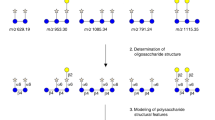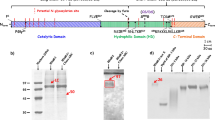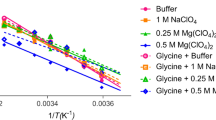Abstract
STARCH-GEL electrophoresis and chromatography on substituted cellulose ion-exchangers have demonstrated that extracts of human kidney contain more than one protein possessing alkaline phosphatase activity. Similar patterns of distribution of enzymatically active zones after starch-gel electrophoresis have been obtained by several workers1,2 and three distinct zones can often be demonstrated : a single zone migrating rapidly towards the anode (Fig. 1, zone 1), a second broad, heterogeneous component (Fig. 1, zone 2), and a third band which migrates very slowly and which may represent enzyme bound to lipid material (Fig. 1, zone 3). The first rapidly migrating component cannot be demonstrated in all extracts, but may sometimes appear after storage at −15° for some months. Elution patterns of kidney alkaline phosphatase from DEAE-‘Sephadex’ columns exhibit a broad similarity, but here also there is some variation from extract to extract. A common feature of all such chromatograms, however, is a sharp peak of activity appearing first in the effluent (Fig. 2). The elution pattern of the remaining enzyme is more varied, but often a second fairly broad peak is obtained3. The presence of sialic acid groups is known to increase the electrophoretic mobility of proteins4, and Robinson and Pierce5 have demonstrated that, after treatment with neuraminidase to remove sialic acid, the electrophoretic mobility of certain alkaline phosphatase components was reduced. To investigate whether the binding of sialic acid is in any way related to the heterogeneity of kidney alkaline phosphatase, this enzyme has been treated with neuraminidase.
This is a preview of subscription content, access via your institution
Access options
Subscribe to this journal
Receive 51 print issues and online access
$199.00 per year
only $3.90 per issue
Buy this article
- Purchase on Springer Link
- Instant access to full article PDF
Prices may be subject to local taxes which are calculated during checkout
Similar content being viewed by others

References
Boyer, S. H., Ann. N.Y. Acad. Sci., 103, 938 (1963).
Butterworth, P. J., Moss, D. W., Pitkanen, E., and Pringle, A., Clin. Chim. Acta, 11, 220 (1965).
Landau, W., and Schlamowitz, M., Arch. Biochem. Biophys., 95, 474 (1961).
Schultze, H. E., Arch. Biochem. Biophys., Suppl. 1, 290 (1962).
Robinson, J. C., and Pierce, J. E., Nature, 204, 472 (1964).
Morton, R. K., Nature, 166, 1092 (1950).
Poulik, M. D., Nature, 180, 1477 (1957).
Estborn, B., Nature, 184, 1636 (1959).
Author information
Authors and Affiliations
Rights and permissions
About this article
Cite this article
BUTTERWORTH, P., MOSS, D. Action of Neuraminidase on Human Kidney Alkaline Phosphatase. Nature 209, 805–806 (1966). https://doi.org/10.1038/209805a0
Published:
Issue Date:
DOI: https://doi.org/10.1038/209805a0
This article is cited by
-
Purification, characterization, and biosynthesis of bovine enamelins
Calcified Tissue International (1988)
-
Reaction of concanavalin a with alkaline phosphatases extracted from various human tissue sources
Molecular and Cellular Biochemistry (1975)
-
Multiple forms of alkaline phosphatase: Some topics of current interest
The Histochemical Journal (1974)
-
Rabbit kidney alkaline phosphatase: Role of sialic acid in the heterogeneity
Experientia (1974)
-
Histochemical analysis of molluscan stomach and intestinal alkaline phosphatase: A sialoglycoprotein
Histochemie (1971)
Comments
By submitting a comment you agree to abide by our Terms and Community Guidelines. If you find something abusive or that does not comply with our terms or guidelines please flag it as inappropriate.


